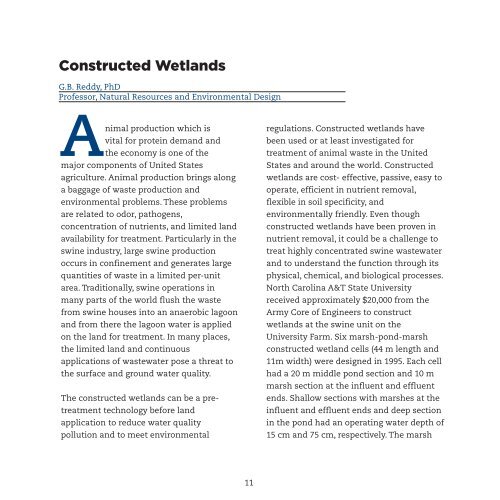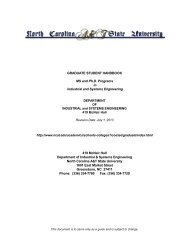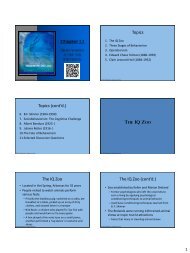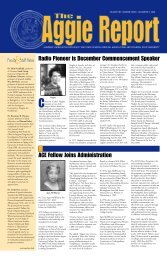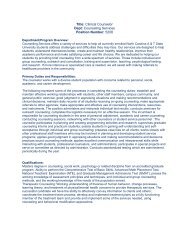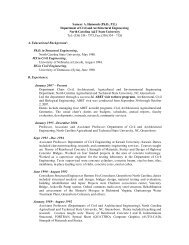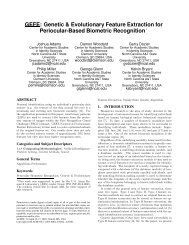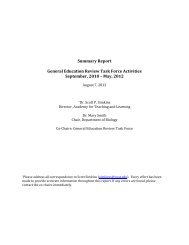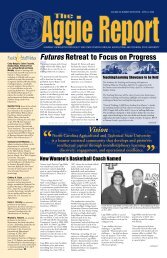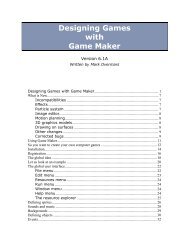Greening Sustainability Brochure - North Carolina A&T State ...
Greening Sustainability Brochure - North Carolina A&T State ...
Greening Sustainability Brochure - North Carolina A&T State ...
Create successful ePaper yourself
Turn your PDF publications into a flip-book with our unique Google optimized e-Paper software.
Constructed Wetlands<br />
G.B. Reddy, PhD<br />
Professor, Natural Resources and Environmental Design<br />
Animal production which is<br />
vital for protein demand and<br />
the economy is one of the<br />
regulations. Constructed wetlands have<br />
been used or at least investigated for<br />
treatment of animal waste in the United<br />
major components of United <strong>State</strong>s<br />
<strong>State</strong>s and around the world. Constructed<br />
agriculture. Animal production brings along wetlands are cost- effective, passive, easy to<br />
a baggage of waste production and<br />
operate, efficient in nutrient removal,<br />
environmental problems. These problems flexible in soil specificity, and<br />
are related to odor, pathogens,<br />
environmentally friendly. Even though<br />
concentration of nutrients, and limited land constructed wetlands have been proven in<br />
availability for treatment. Particularly in the nutrient removal, it could be a challenge to<br />
swine industry, large swine production<br />
treat highly concentrated swine wastewater<br />
occurs in confinement and generates large and to understand the function through its<br />
quantities of waste in a limited per-unit<br />
physical, chemical, and biological processes.<br />
area. Traditionally, swine operations in<br />
<strong>North</strong> <strong>Carolina</strong> A&T <strong>State</strong> University<br />
many parts of the world flush the waste<br />
received approximately $20,000 from the<br />
from swine houses into an anaerobic lagoon Army Core of Engineers to construct<br />
and from there the lagoon water is applied wetlands at the swine unit on the<br />
on the land for treatment. In many places, University Farm. Six marsh-pond-marsh<br />
the limited land and continuous<br />
constructed wetland cells (44 m length and<br />
applications of wastewater pose a threat to 11m width) were designed in 1995. Each cell<br />
the surface and ground water quality.<br />
had a 20 m middle pond section and 10 m<br />
marsh section at the influent and effluent<br />
The constructed wetlands can be a pre-<br />
ends. Shallow sections with marshes at the<br />
treatment technology before land<br />
influent and effluent ends and deep section<br />
application to reduce water quality<br />
in the pond had an operating water depth of<br />
pollution and to meet environmental<br />
15 cm and 75 cm, respectively. The marsh<br />
11


